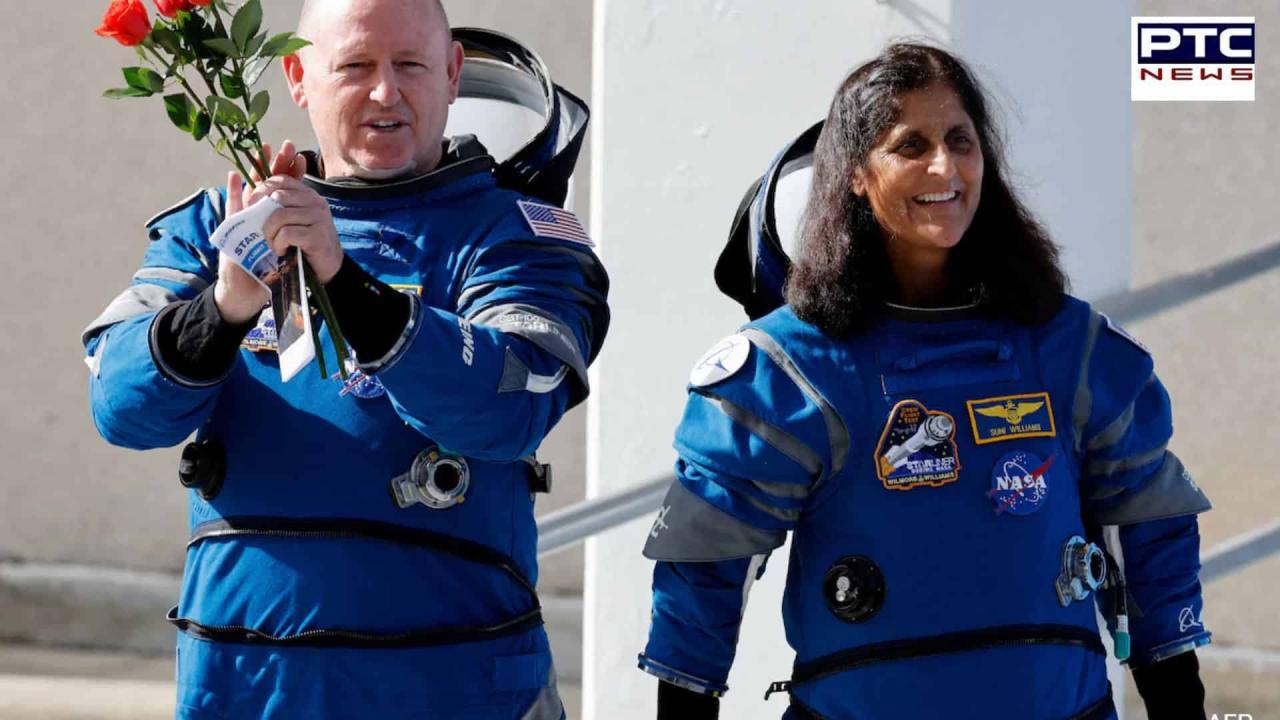

Sunita Williams and crew face challenges as 'spacebug' detected on space station
PTC News Desk: For Sunita Williams, an Indian astronaut with NASA, and the other eight crew members aboard the International Space Station (ISS), including those who are presently residing on the orbiting facility, a new headache has grown. Within the International Space Station, a superbug is hiding.
Researchers have discovered "Enterobacter bugandensis," a multi-drug resistant microbe that has grown stronger in the ISS's enclosed habitat. Many refer to it as a "superbug" because of its resistance to multiple drugs. The respiratory system is contaminated by this bacteria.
Spacebugs are bugs that have travelled as covert co-passengers to operate at the International Space Station (ISS); they are not extraterrestrial life.
Indian American astronaut Sunita Williams dances as she reaches International Space Station ????
She captained the Boeing Starliner
Source: #BoeingStarliner and NASApic.twitter.com/7vARPfZrBs — Kreately.in (@KreatelyMedia) June 7, 2024
On June 6, 2024, Ms. Williams and her coworker Astronaut Barry Eugene "Butch" Wilmore arrived at the International Space Station (ISS) aboard the newly developed Boeing Starliner spacecraft. They are expected to stay there for more than a week, after testing the new spacecraft that Ms. Williams assisted in designing, before making their way back to Earth.
The other seven crew members have spent more time residing on the ISS. Bugs that have been brought aboard as fellow travelers and have developed over the space station's 24 years of continuous habitation are a major source of concern, while flying space debris and micrometeorites are usually the main sources of concern at the International Space Station.
NASA stated in a recent report about the superbugs that isolates of the bacterium species E. bugandensis that were taken from the International Space Station (ISS) were examined. From the International Space Station, thirteen strains of the multidrug resistant bacteria E. bugandensis were recovered.
Also Read: Remembering Sidhu Moosewala on his birthday: A musical legend and cultural icon
The study's conclusions show that, in comparison to their Earth counterparts, the ISS-isolated strains underwent genetic and functional alterations due to stress.
The strains were able to sustain themselves and grow significantly over time at the International Space Station. Numerous other microbes coexisted with E. bugandensis, and in certain situations, it may have even contributed to their survival.
Dr. Kasthuri Venkateswaran of NASA's Jet Propulsion Laboratory in Pasadena, California, USA, has been leading the investigation.
Before joining NASA, he happened to study Marine Microbiology at Annamalai University in Chennai. He named the new multi-drug resistant bacteria he found in 2023, Kalamiella Piersonii, after his old mentor, former President Dr. APJ Abdul Kalam.
Also Read: PM Modi likely to maintain current national security leadership
A team led by Professor Karthik Raman of the Department of Data Science and AI at Wadhwani School of Data Science and AI (WSAI), Dr. Kasthuri Venkateswaran, Senior Research Scientist at JPL, NASA, Mr. Pratyay Sengupta, Mr. Shobhan Karthick MS, Research Scholars, IIT Madras, and Mr. Nitin Kumar Singh from JPL, NASA conducted additional research on E. bugandensis. The findings were published in the scientific journal Microbiome.
The researchers draw attention to the particular health difficulties faced by astronauts on space missions because of their weakened immune systems and restricted access to conventional medical facilities. Determining how these microbes affect astronaut health requires an understanding of the microbial environment on board the International Space Station.
Dr. Kasthuri Venkateswaran, Senior Research Scientist at JPL, NASA, highlighted the research's wider implications when he said, "Our research reveals how certain benign microorganisms help to adapt and survive opportunistic human pathogen, E. bugandensis, in the unfavorable conditions of the International Space Station." The understanding of microbial behavior, adaption, and evolution in harsh, isolated conditions that this research will provide will aid in the development of creative countermeasure plans to get rid of opportunistic infections and safeguard astronauts' health."
Closed human-built spaces, like the International Space Station (ISS), are special places that offer an extreme environment vulnerable to radiation, microgravity, and increased carbon dioxide levels, according to NASA. For any microbe to flourish in these environments, adaptation is necessary. Through an exploration of microbiological dynamics in harsh environments, this study provides opportunities for efficient health precautions for astronauts.
According to Professor Karthik Raman, "Microbes continue to puzzle us by growing in the most challenging conditions."
- With inputs from agencies
